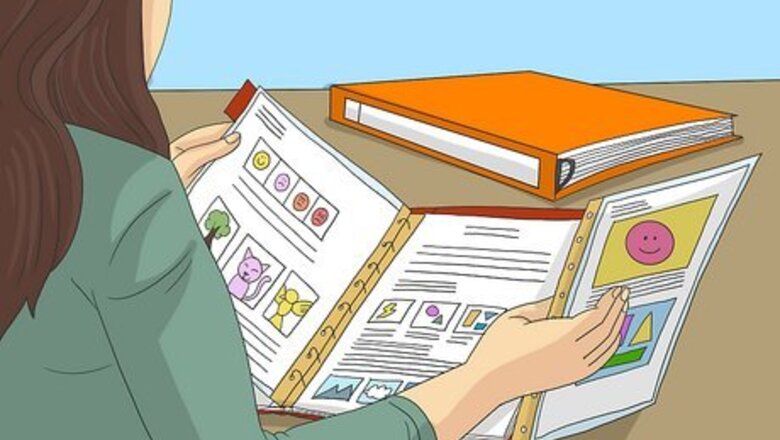
views
Creating Structure
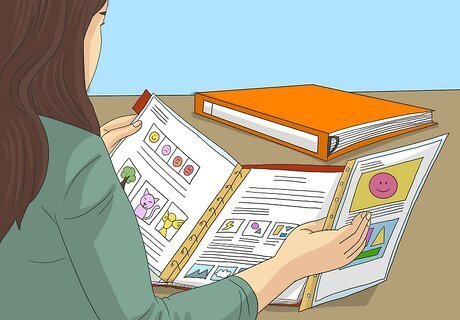
Keep a binder for planning your classroom and routine. If you're feeling overwhelmed about teaching or just want to keep track of your schedule, get a binder that has dividers and tabs. File important information that you'll need during the school day so it's conveniently in one place. For example, your files or tabs could include: Lesson plans School calendar To do lists Contact information Field trips Meeting notes
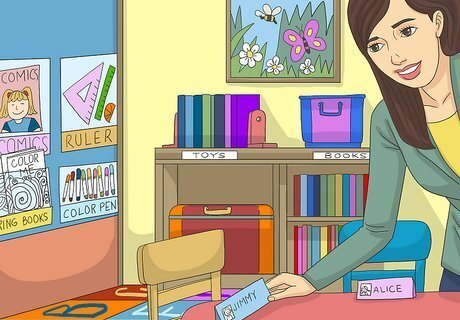
Set up your classroom. Find out how many students you'll have and then plan for a few more in case you get kids later in the year. Set up tables and chairs in small groups and leave space for cubbies or storage. It's important to structure the room so there aren't hiding places where kids can run off to. Label each desk with the children’s names and photos. Create labels for toy bins and include pictures for closed containers. If you find that you don't sit at your desk very often or use it much at the end of the day, take it out of your classroom. This will free up valuable space in the room.
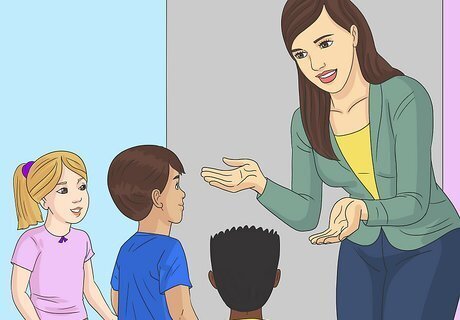
Give the kids firm expectations and stick to the standards. Even though the kids can't read yet, write out the classroom rules or expectations on a large poster board. Talk with them about acceptable behavior and let them know that you won't allow misbehavior. Be consistent in handling misbehavior so the kids learn boundaries. To help create a sense of community, involve your students in creating simple rules for the classroom. Choose a few books about rules and good behavior to read with your students. Don't forget that kindergartners will also have expectations about how kindergarten should go. Ask the kids what they expect to learn or do while they're at school and help them work toward their goals. Set firm participation requirements for your students. Kids need to participate to get the most out of class.
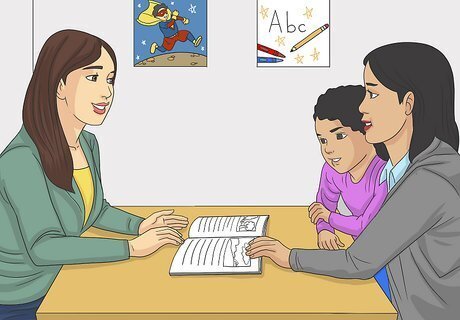
Communicate with your students' parents. For some parents, kindergarten may be the first time they've left their children for an extended period of time. Ensure that you have the parents' phone numbers and can reach them during the day. To keep the lines of communication open, leave time to talk with parents at the end of the class day or send home newsletters about classroom activities. To get to know the parents, set up a “meet the teacher” night before school starts. Schedule parent-teacher conferences on a regular basis. Pass a communication log or notebook back and forth between yourself and the parents of children with special needs or those with behavioral challenges to stay up to date on the child’s needs and progress. For a fun way to keep in touch, have the parents write their address on an envelope. Mail a card or letter to the parents if you have concerns, questions, or praise about their child.

Take care of yourself and try not to lose your patience. Kindergartners take a lot of energy, so rest up before school begins and eat right. If you're feeling your best, you'll probably be less likely to lose your temper or get frustrated easily. If you start to lose your patience, remember that your students are only 5 years old and they may be overwhelmed or overstimulated in the classroom. Remember that a child’s attention span is approximately their age in minutes. So, 5-year-olds may only be able to focus on a task for 5-10 minutes at a time. If you are overwhelmed, ask if another teacher can cover you for a bathroom break and do a short 5-minute meditation.
Engaging in Play-Based Learning
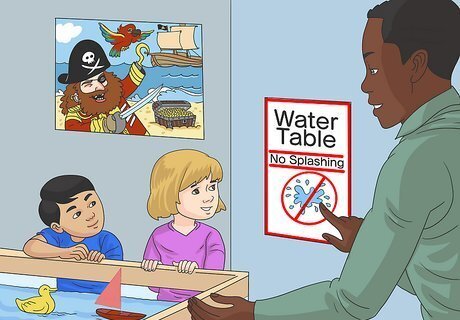
Set up learning-based centers in the classroom. Young children learn best by playing, so encourage them to interact with play centers. Create distinctive play areas or scatter playing materials throughout the classroom. Label each center. For example, have a water or sand table set up in 1 corner of the room. Put blocks and construction materials in another space. Then, set up a reading nook in another corner. Create rule charts with pictures for each center. For instance, make a sign that says “no splashing” with a picture of a splash surrounded by a red circle with a diagonal line through it and post it next to the water table.
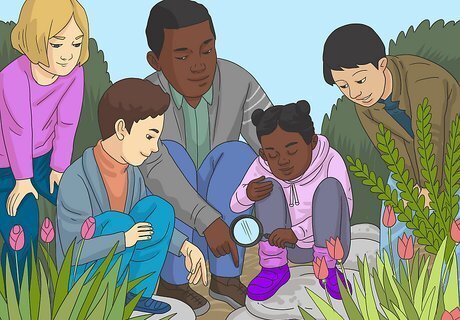
Take your class outside. All kindergartners, especially those who struggle to sit at a desk for long periods of time, will benefit from getting to move around outside. Get the class outside and have them explore. Talk with them about plants that grow, what the weather is like, or insects you find. Use a branch to write letters in the snow or draw shapes for the kids to identify. If you'll be taking the children outside in poor weather, ensure they all have the right outdoor gear. Consider keeping umbrellas or mittens that you can distribute to the kids. Include gross motor activities in your daily schedule.
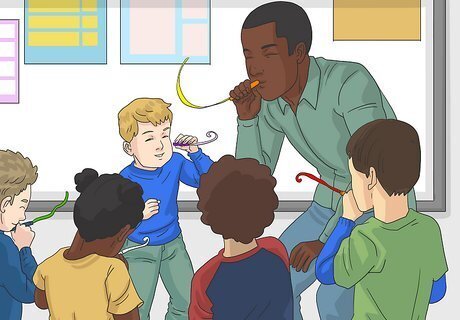
Play with your students. Young kids will be more excited about learning if you make the subject fun. Instead of telling the kids what you're going to be teaching them, create a story around the information and ask them to play along with you. Remember that you can play using instruments. Give the children small instruments or noise makers and have the kids play their instruments in a specific order. This is a great way to teach patterns. For example, instead of saying, "You're going to be learning about the ocean and sea animals," tell them, "Today, we're going to explore 1 of the most beautiful and amazing places on the planet. Will you come with me to discover what creatures live in the ocean?"
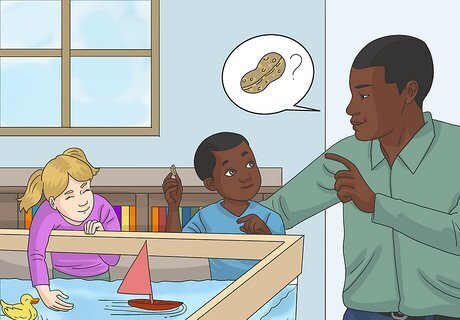
Ask open-ended questions when the kids play. Get the children thinking like explorers, scientists, or adventurers. When you notice a child playing, go over to them and watch for a minute. They may want to show you what they're doing. Ask them questions to encourage learning. For example, say, "I see you put that nut in the water. Is it floating or sinking? What do you think would happen if you put a rock in the water?"
Introducing Academics

Create a daily schedule. Your schedule doesn't have to be planned down to the minute, but it can help kids to expect a simple routine. Remember to plan for transitions, restroom breaks, and meal times. A simple daily schedule may include: 8:30 to 9:00: Arrival and welcome 9:00 to 10:15: Listening to stories and working on letters 10:15 to 10:45: Snack, outdoor play, and bathroom breaks 10:45 to 11:30: Playing in learning-based centers 11:45 to 12:15: Lunch and bathroom breaks 12:15 to 12:35: Quiet time 12:35 to 1:30: Social studies and science experiments 1:30 to 2:20: Outdoor exploration and bathroom breaks 2:20 to 2:35: Cleanup and dismissal

Use toys and tools to introduce basic math. Have your kindergartners count blocks, beads, or stickers so they can work on counting large numbers. Use these items to help the kids understand addition and subtraction. Instead of giving kindergartners math equations to solve, phrase them as word problems. For example, give 1 child 3 balls. Ask the child how many balls they'll have if they give 2 to a friend. Remember to include math throughout the day. For example, if a child collects leaves, ask them to count how many they gathered.

Get the kids excited about physical and life science. Young children are naturally curious about the world around them. Foster that enthusiasm by doing hands-on science activities. For example, use puppets or small animal toys to teach kids about animals and their environments. Give kids the opportunity to do science experiments such as: Growing simple plants Activating yeast in water Making an exploding volcano Mixing up their own slime
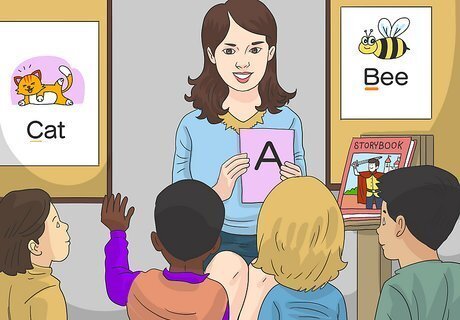
Encourage early reading and listening skills. Spend a lot of time reading to your class to develop their pre-reading skills. Since some kids learn better when they see things, show the words to the kids or use puppets to act out parts of a story. For example, choose a letter to focus on for the day. Show the kids the letter and read them a tongue twisters or rhymes that use that letter. Ask kids to point to words when they see them. Don't force the kid to identify the word. Instead, sound it out together so the child begins to recognize the sounds that letters make. Make sure your kids are reading books at their reading level. Phonics lessons can be useful for early readers with dyslexia. Phonics is all about creating associations between letters and sounds; if they get that help early on, it can make a big difference for those kids.
Managing Classroom Challenges
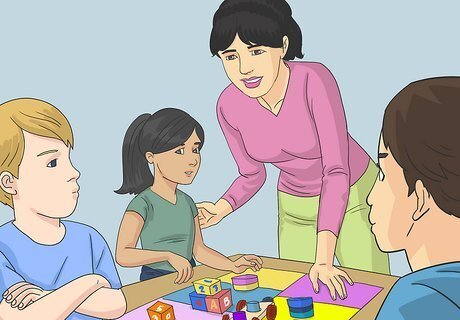
Set clear and consistent behavior expectations. Talk with your class about appropriate behavior and explain to them that they all need to respect each other. If you do see misbehavior, talk with the student immediately so they learn that that behavior isn't acceptable. For example, if you see a student call another a name, tell them, "Name calling hurts feelings. Let's see if there's something kind we can say instead." Set up a reward system for good behavior if the children are struggling with the rules. Similarly, create a communication log to inform parents of behavioral issues.
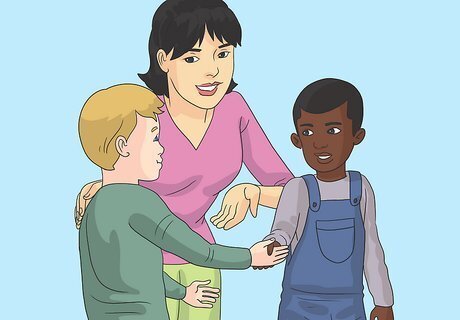
Help students develop social skills. Kindergarten may be some children's first experience interacting with a bunch of kids. Encourage the kids to play together and include one another in their schoolwork. Remind the kids that everyone is different and that your classroom is a place for friendship. Get the kids to pair up when you take them out of the classroom and have them keep track of their "buddy." Create a lesson plan designed around a particular social skill if you notice your students struggling with it.

Get talkative students to listen. Let the students know that it's not acceptable to talk when you need their full attention. If you still have students that talk over you or need constant attention, praise them when you notice good behavior. Ask them to assist you with parts of the school day and make them feel involved. They'll be more likely to listen to you, especially if you ask them to quiet down. For example, say, "I need you to stop telling your story now so we can have circle time. Would you pass out these books to the class for me? It would be a big help." Use a quiet down signal, such as chanting “one, two, three” to which the students can respond “all eyes on me!”

Help students calm down if they're having a meltdown. Create a space in your classroom where kids can choose to go if they're feeling angry, upset, or overwhelmed. Fill the space with pillows or blankets, books about emotions, stress balls, or art supplies. When the child is ready to come out of the calm down space, identify what they were feeling and let them talk to you about it. For example, say, "You were really mad that she took your drawing. Would you like to come over and work on a project with this group?" Make a note of what caused the meltdown and let the child’s parents know what happened.










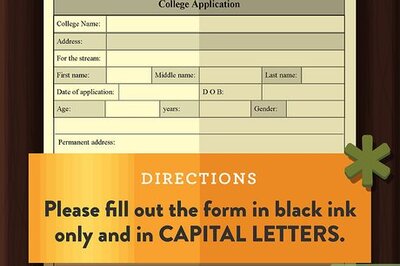








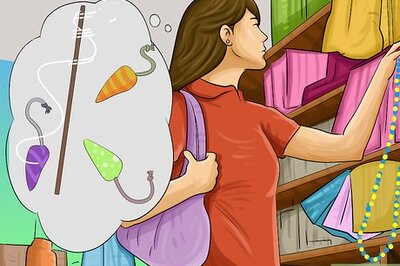
Comments
0 comment